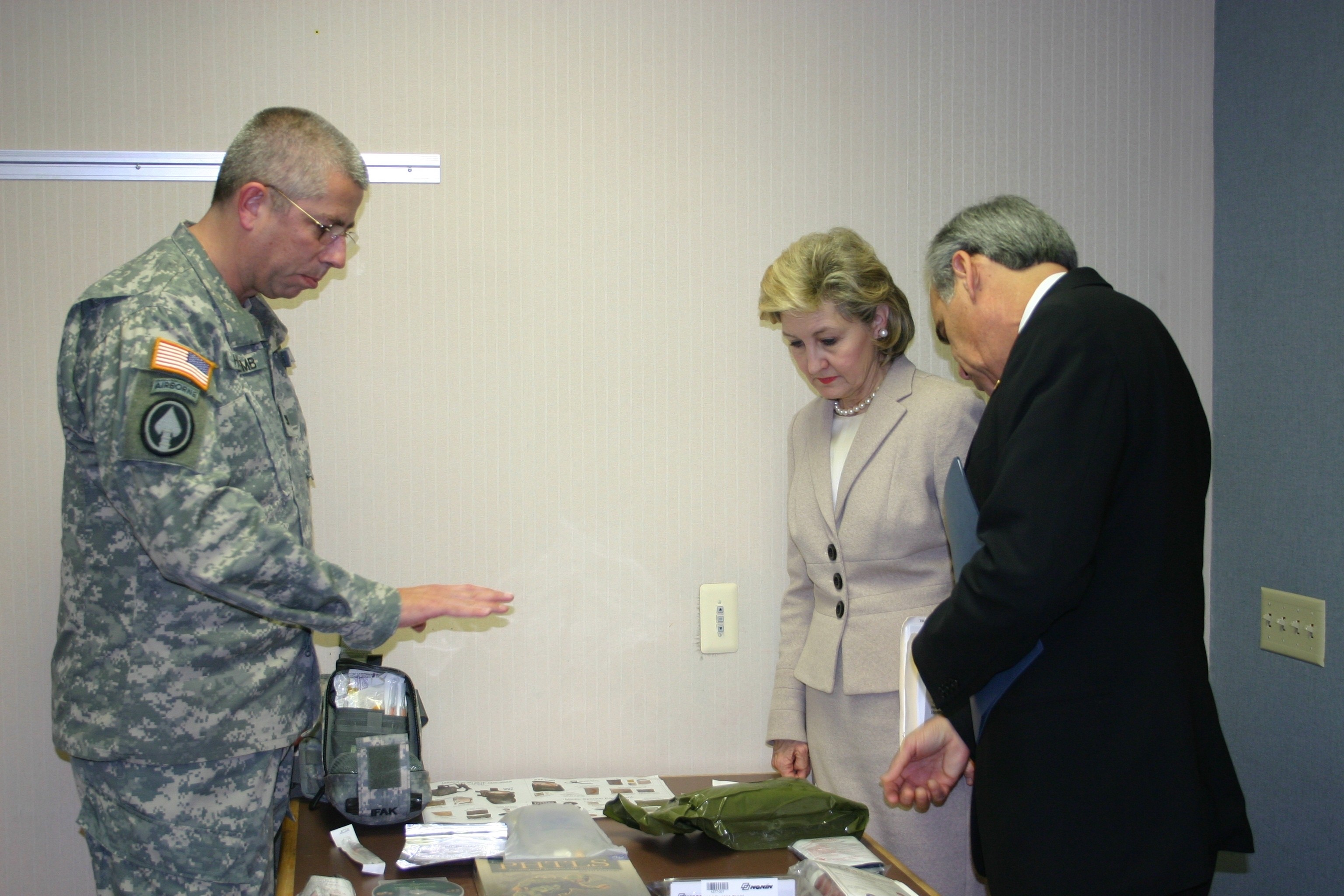
FORT SAM HOUSTON, Texas (Army News Service, March 1, 2007) - A San Antonio-based joint trauma institute is taking on a national role, a change that is expected to have a positive impact on trauma research, officials said Feb. 23 during a press conference at the U.S. Army Institute of Surgical Research here.
Sen. Kay Bailey Hutchison and Rep. Charlie Gonzalez together announced the formation of the National Trauma Institute, formerly known as the Trauma Institute of San Antonio, Texas.
"I think we can do phenomenal things, not only for our troops in the field in Afghanistan and Iraq ... but also for people who are victims of car accidents and other traumas," said Hutchison, who was instrumental in the formation of TRISAT.
The TRISAT collaboration started in 2004 as an effort to coordinate medical care, training and administrative functions for trauma. The institute partnered San Antonio's three Level 1 trauma centers - Brooke Army Medical Center, Wilford Hall Medical Center and the University Health System - along with the University of Texas Health Science Center at San Antonio and the ISR. It was the nation's first combined military and civilian trauma partnership.
"The Army, Air Force and university relationship is a powerful thing for San Antonio citizens and now for the nation," said Col. John Holcomb, ISR commander, adding that San Antonio is home to the only two Level 1 trauma centers in the Department of Defense.
"Becoming a national institute will increase our funding and our impact on national trauma research," he said.
The joint collaboration benefits both civilians and military members, Holcomb said. "The research we do on the battlefield applies to civilian traumas and the research on civilian traumas works in the battlefield. It's a give and take relationship," he said.
"Great research is being done in San Antonio, both in the burn area, for which San Antonio has been known for a long time, and also in prosthesis," Hutchison added. "That is exactly what we owe these great patriots who have fought so much for our country."
Despite budget crunches within the DoD, Hutchison said the trauma institute is in a "good position" since the funding for the DoD bill went through. She also relayed assurances from the majority leader that the Base Realignment and Closure funding, which means about $141 million for San Antonio, was secured.
"We gave the DoD six years to complete a BRAC transfer; we have to give them the money to build the facilities to make these transfers," Hutchison said.
"I think we have the assurances from those who are able to deliver in this process," Gonzalez said. "Things look promising but we still need to be vigilant and diligent."
Hutchison said her focus will remain on San Antonio and El Paso, which have the biggest projects in BRAC and military construction. Fort Bliss will be one of the recipient bases of 70,000 overseas troops returning home.
"We have also got to do military construction there so these people have a place to come and they have the quality of live that we owe our military personnel," Hutchison said.
"Everyone in the U.S. Congress believes that our Soldiers, Airmen, Marines, anyone who is in Iraq, deserves to have the support they need to do the job they're asked to do," she said.
(Elaine Wilson writes for the Fort Sam Houston Public Information Office.)

Social Sharing